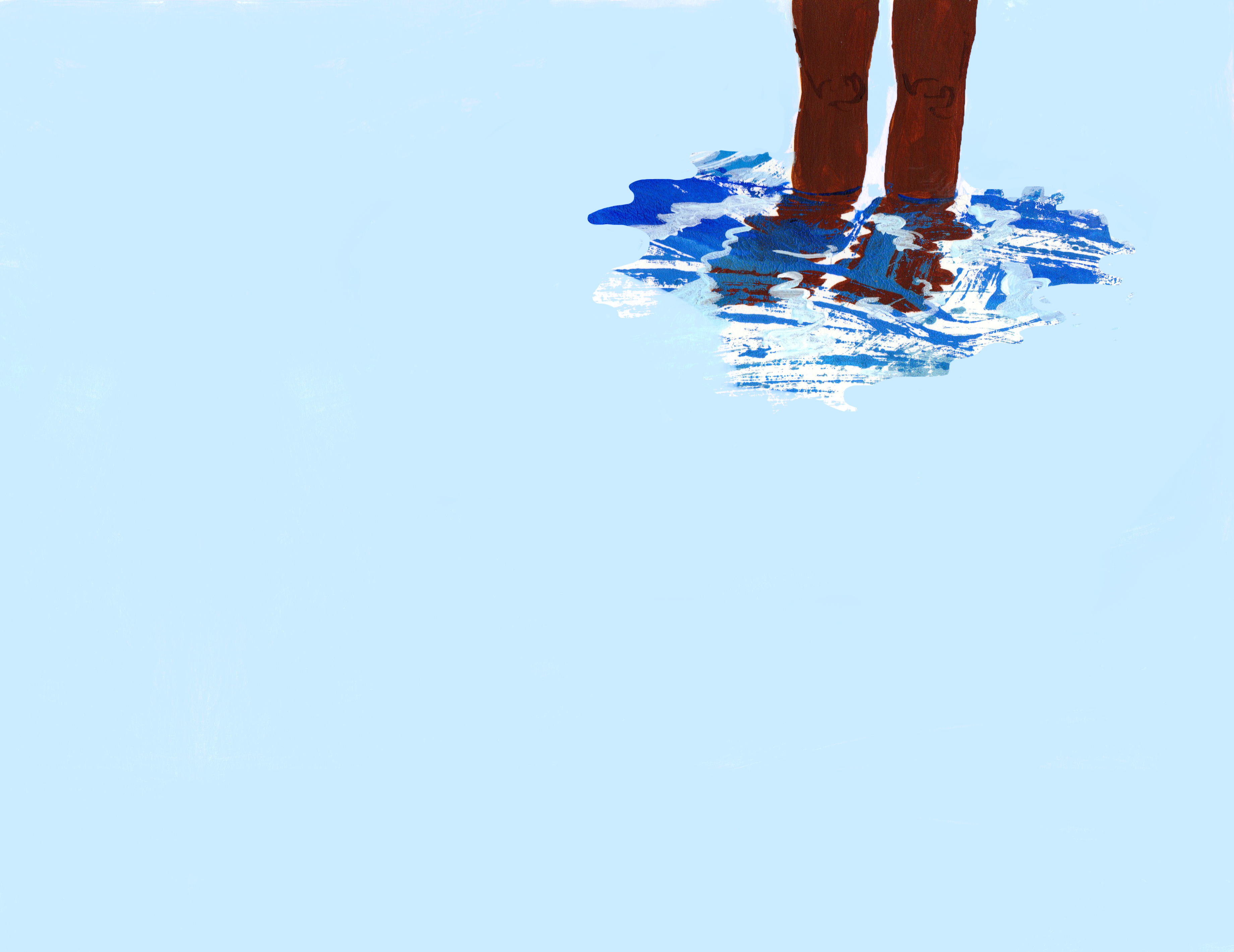Claire Thompson (she/her),
artwork by olivia juett (she/her)
CW: Mental illness
Times have changed; life is moving quicker than ever and many of us feel that we are constantly fighting a losing battle to relax, recuperate and grow. It’s true what they say: we’re carrying the weight of the world on our shoulders, and its overwhelming pressure is forcing us under. We’re struggling to even come up for air, let alone escape the stress and tension that encompasses us. So when the state of the world that we’re living in is stunting us both physically and mentally, it’s hardly a surprise that we are seeking stasis. We’re craving stillness, sudden shock, silence – all in an attempt to summon strength and encourage growth of the mind and body.
Stasis is the state of inactivity or equilibrium caused by equal forces. In our hundred mile-per-hour lives, we are often desperate for that feeling of nothingness — a relief of tension — but cannot find the time to truly experience it. In recent years, science has discovered that we can shock our bodies into achieving stasis by quickly slowing down some of its functions, with the overall effects being potentially life changing with sustained practise. Coldwater shock therapy is currently an ironically hot running wellness trend that epitomises this method. It’s the practice of immersion into water that is between 10 and 15 degrees Celsius (that’s a lot colder than it sounds, bearing in mind the average temperature of a swimming pool is between 28 and 32 degrees Celsius- trust me!) for short periods of time to treat health conditions or stimulate health benefits. For many, it’s not the most appealing idea, but this form of therapy can actually be largely enjoyable. Whilst there is the option to plunge into ice baths or drop the nice, hot shower down a few degrees, one of the increasingly popular ways is open water (or wild) swimming. Granted, it’s not as possible to determine the exact water temperature, therefore making the science behind it a bit less accurate, but in Scottish waters, there’s no chance of it not taking full effect all year round.
Having done open water swimming (for fun, not therapy), it’s hard to recognise the benefits when you’re shivering whilst standing knee-deep in the sea, wavering from side to side and refusing to put your elbows in (if you know, you know), but despite this, you can actually achieve growth. This technique is believed to improve circulation, deepen sleep, spike energy levels, and reduce inflammation in the body. Cold water causes blood vessels to constrict and forces blood to the surface to warm the limbs and appendages, in particular, the hands and the feet. It flushes the veins, arteries, capillaries, which in turn increases circulation. By moving the blood to these areas of the body, it detracts from the blood flow to other areas, therefore reducing swelling and inflammation. Ice baths are especially popular with athletes as they speed up the recovery of the muscles. The shock of the iciness combined with the thought of feeling like you’ll never be warm again speeds up the heart, as it must work harder to maintain a healthy core body temperature.
But, if the body is working overtime to stay alive, how are we achieving stasis? Physically, we are not at peace. Our internal organs are crying out and seeking warmth in any way possible, albeit to our benefit. However, during their battle for heat, they are slowly shutting down. This may sound scary but it is crucial in the process of cold water shock therapy. The cold forces us to slow down our breathing and take deeper breaths, which decreases the CO2 levels in the body and improves concentration as well as improving sleep, in a similar way to meditation. The slowing down of the brain further relieves stress and tension as the body is hardened, creating an equilibrium which can deal with our difficulties in a more efficient manner. By no means is cold water a cure for mental health conditions, but it is proven by many studies that it can alleviate symptoms of depression and anxiety. This is likely through the release of endorphins, which are activated when the body is in controlled pain — for example, during exercise. The activity combined with the extreme change in temperature means that wild swimming brings us closer to that pain barrier and activates said increased level of endorphins.
If you’ve never tried open water swimming and are able to do so, I would definitely recommend braving it and taking the plunge. Yes, it sucks at the beginning but when you look back you will realise that you well and truly have been shocked into stasis. It is the perfect balance of physical and mental benefits. Plus, the real bonus is the feeling of proper warmth afterwards that is completely indescribable. Wild swimming can take you on some real adventures, and besides that, being in nature is good for the psyche without the added cold water element. As with every form of therapy, whilst it might be fun, it is still so important to take it slow and do research before diving straight in. Find that point of relaxation and be at one with the water – whatever that ‘water’ might be for you!

